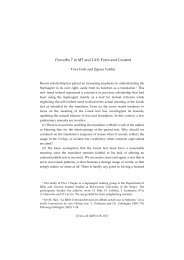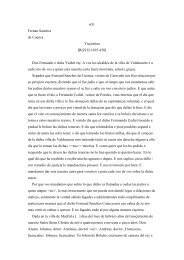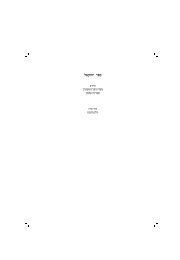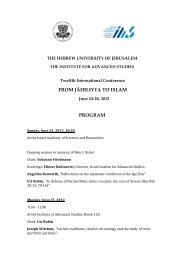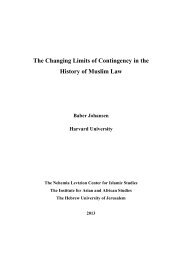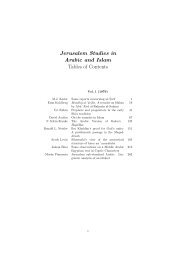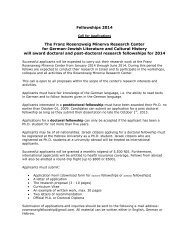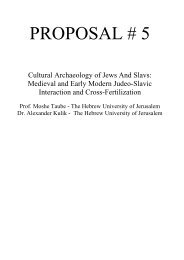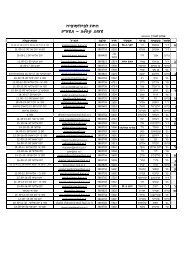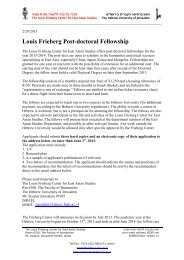THE BOOK OF EZEKIEL Moshe H. Goshen-Gottstein Shemaryahu ...
THE BOOK OF EZEKIEL Moshe H. Goshen-Gottstein Shemaryahu ...
THE BOOK OF EZEKIEL Moshe H. Goshen-Gottstein Shemaryahu ...
You also want an ePaper? Increase the reach of your titles
YUMPU automatically turns print PDFs into web optimized ePapers that Google loves.
Introduction<br />
positions of rabbinic literature, in midrashic homilies not directly dependant on one another;<br />
(e) the variant is attested in a homily in which the text of the relevant verse is its<br />
specific issue; (f) a masora comment witnesses to the antiquity of the variant reading (such<br />
as dti, or oixiaq).<br />
69. Variants deriving from scribal practices were not recorded in the apparatus, such as<br />
interchanges of similar consonants ( k /a ,x/ c etc.), interchanges of lr / l`, additions or omissions<br />
of waw, plene vs. defective spelling, changes due to the influence of Rabbinic Hebrew<br />
(mem or nun at the ends of words, etc.), and the like. In rare instances readings were listed<br />
which are attested in a large number of witnesses, even though they do not match any of the<br />
above conditions. 91 Variants which were not included in Apparatus II, but have a bearing on<br />
variants in other apparatuses were adduced in the notes. 92<br />
70. Sigla and abbreviations employed in Apparatus II:<br />
> lacking<br />
§ a space indicating a section<br />
ba(`) Hebrew letters enclosed in parentheses are attested only in some manuscripts<br />
[ba`] Hebrew reconstructed text on the basis of a parallel or the extent of the<br />
lacuna<br />
[>] text section reconstructed on the basis of the extent of the lacuna<br />
`˙ a partially but clearly preserved letter<br />
`Ç a faintly preserved letter<br />
ba` text erased by the scribe<br />
herm possible reading in rabbinic source derived (sometimes implicitly) from the<br />
midrashic exegesis<br />
al tiqre a reading reflected in an ‘al tiqre’ type midrash<br />
ketib a reading reflected in a ‘ketib’ type midrash<br />
ms(s) a reading found in ms(s) of a rabbinic source<br />
super a superlinear reading<br />
V. APPARATUS III: MEDIEVAL BIBLE MANUSCRIPTS<br />
Sources<br />
71. The two types of Hebrew witnesses included in Apparatus III, Genizah fragments and<br />
complete medieval manuscripts, chronologically reflect the third stage in the transmission<br />
91 For example, 34:31, oz`e; the predominant reading in rabbinic literature is dpz`e.<br />
92 The approach taken in recording variants in biblical quotations in rabbinic literature in the present<br />
volume is stricter than that taken in the editions of Isaiah and Jeremiah. Efforts have been made not<br />
to overload the apparatus with readings that are of questionable textual value. This accounts for the<br />
apparent paucity of variants from rabbinic literature in comparison to the approach taken by the<br />
editors of the preceding two volumes.<br />
xxxvi



